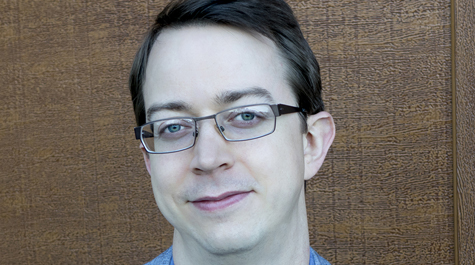COVID-19 and the labor force: A long recovery ahead
Despite encouraging numbers from the Bureau of Labor Statistics the last two months, recovery from the job destruction caused by the COVID-19 pandemic is still expected to take a long time.
By April, when stay-at-home orders were firmly in place, 23.1 million Americans were unemployed. That number dropped by 5.3 million in May and June as COVID-19 infections started leveling off and stay-at-home orders were lifted, but the rise in infections in recent weeks could create another large shock in job losses.
“What’s really important is the policy response going forward,” W&M economics Professor Nathaniel Throckmorton said. “If the recent increase in COVID-19 cases leads the government to ask people to stay home again, then the recovery could take much longer.”
Throckmorton co-authored a paper with Indiana University’s Joshua Bernstein and Alexander W. Richter of the Federal Reserve Bank of Dallas called COVID-19: A View from the Labor Market that was recently published by the Federal Reserve Bank of Dallas.
Throckmorton estimates it could take two years for the country to return to unemployment numbers before COVID-19, and it could take much longer for a full recovery from its current state.
“All the indicators are that we’re in the middle of a recession, and part of the paper is to figure out how long it's going to take to return back to normal,” Throckmorton said.
The country’s last recession from Dec. 2007 to June 2009 “was a different kind of recession with different origins, but it took eight years for the labor market to recover,” Throckmorton said. “Recovery is a long process. It’s going to take a long time.”
The federal government’s stay-at-home orders led to an “unprecedented increase in initial unemployment claims interpreted as a once-in-a-century job separation shock,” according to the paper.
According to economic data from the Federal Reserve Bank of St. Louis, employment fell by 22.4 million in April.
“At the start of the pandemic, initial claims for unemployment insurance hit 3.3 million in the first week, which was almost five times the previous record set in October 1982,” Throckmorton said. “The following week we saw 6.9 million new claims, double the previous week. It was all just happening so quickly.”
Based on those initial unemployment claims, Throckmorton and the other authors projected the unemployment rate to peak at 19.7% in mid-May, a 16.2% increase from the unemployment rate in February before the pandemic hit.
The Bureau of Labor Statistics reported the April unemployment rate at 14.7% and the May rate at 13.3%. But the BLS noted some workers were misclassified, so the April unemployment rate would have been close to 20 percent, putting it in the ballpark of the researchers’ projections.
In June, the unemployment rate declined by 2.2 percentage points to 11.1%, and the number of unemployed persons fell by 3.2 million to 17.8 million. That is still 2.5 million more than the worse point of the Great Recession, which hit 15.3 million in April 2010.
“Given the most recent data, I do think things are recovering faster than we originally thought they would,” Throckmorton said.How quickly things get back to normal depends on policymakers, Throckmorton said. Stay-at-home orders caused some employers to drastically decrease their workforce, and consumer confidence has declined significantly.
“If you're concerned about production or consumption and things like that, you're going to have to really boost people's confidence to make them feel safe, get them back out in the economy and buying goods and services,” Throckmorton said.
On a personal level, Throckmorton feels things are slowly turning around. He recently ventured out to a local barbecue restaurant and felt like people were taking physical distancing measures seriously, wearing masks and staying separated between tables or outside having a picnic.
He felt safe going to the grocery story fairly soon after stay-at-home orders started to lift.
“With the routine stuff I don’t think it has affected our lives that much. But that’s not the case if you’re used to going to a major sporting event or concert every month or every couple of weeks and you spend a lot of money on those things.”
Throckmorton and the other authors are currently working on a study that explores the effects of large unemployment shocks like the COVID-19 pandemic on employers and how shutdowns of these employers effect the economy.
Bad shocks lead to lower profits and job destruction. This causes some employers to shut down, which will prolong the recovery in the labor market from that event. When those jobs are destroyed, it will take time for workers to find new jobs and good jobs that they want to keep.
“There’s been a lot of work coming out on COVID-19, especially in my field of macroeconomics,” Throckmorton said. “People are working 24 hours a day, seven days a week thinking about the issue. We’re happy to have a small contribution to the research on this kind of event.”
















